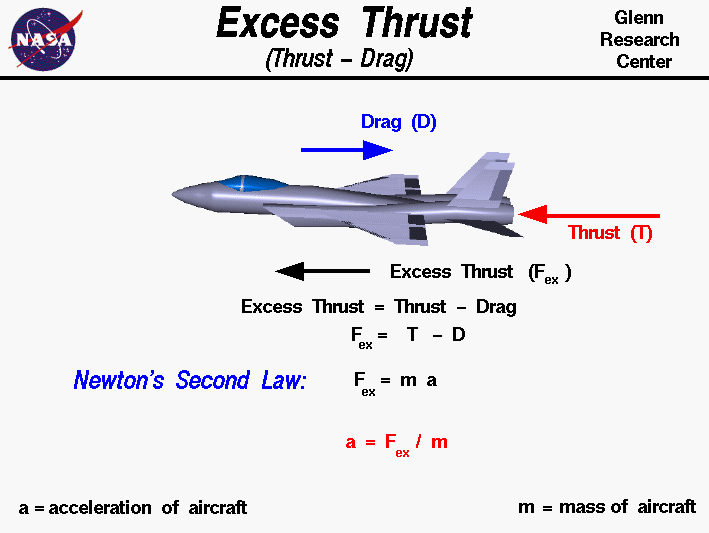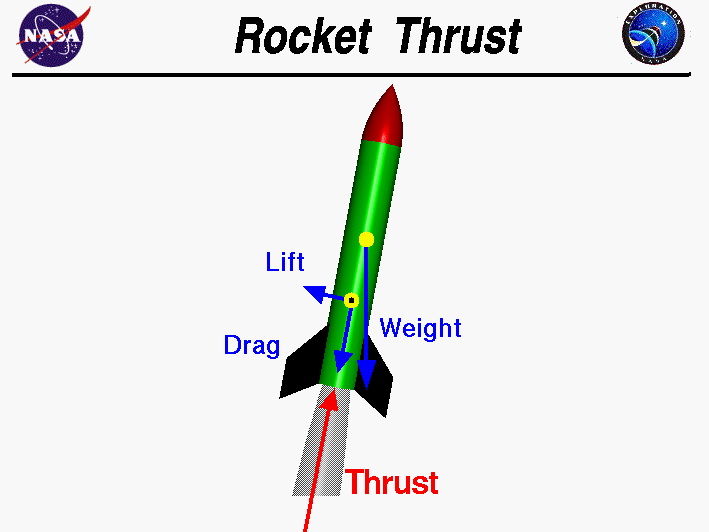In mechanical engineering, force orthogonal to the main load (such as in parallel helical gears) is referred to as thrust.
A motorboat generates thrust (or reverse thrust) when the propellers are turned to accelerate water backwards (or forwards). The resulting thrust pushes the boat in the opposite direction to the sum of the momentum change in the water flowing through the propeller.
Thrust is the force which moves an aircraft through the air. Thrust is used to overcome the drag of an airplane, and to overcome the weight of a rocket. Thrust is generated by the engines of the aircraft through some kind of propulsion system.
A jet engine has no propeller, so the propulsive power of a jet engine is determined from its thrust as follows. Power is the force (F) it takes to move something over some distance (d) divided by the time (t) it takes to move that distance
A motorboat generates thrust (or reverse thrust) when the propellers are turned to accelerate water backwards (or forwards). The resulting thrust pushes the boat in the opposite direction to the sum of the momentum change in the water flowing through the propeller.
Thrust is the force which moves an aircraft through the air. Thrust is used to overcome the drag of an airplane, and to overcome the weight of a rocket. Thrust is generated by the engines of the aircraft through some kind of propulsion system.
A jet engine has no propeller, so the propulsive power of a jet engine is determined from its thrust as follows. Power is the force (F) it takes to move something over some distance (d) divided by the time (t) it takes to move that distance




No comments:
Post a Comment